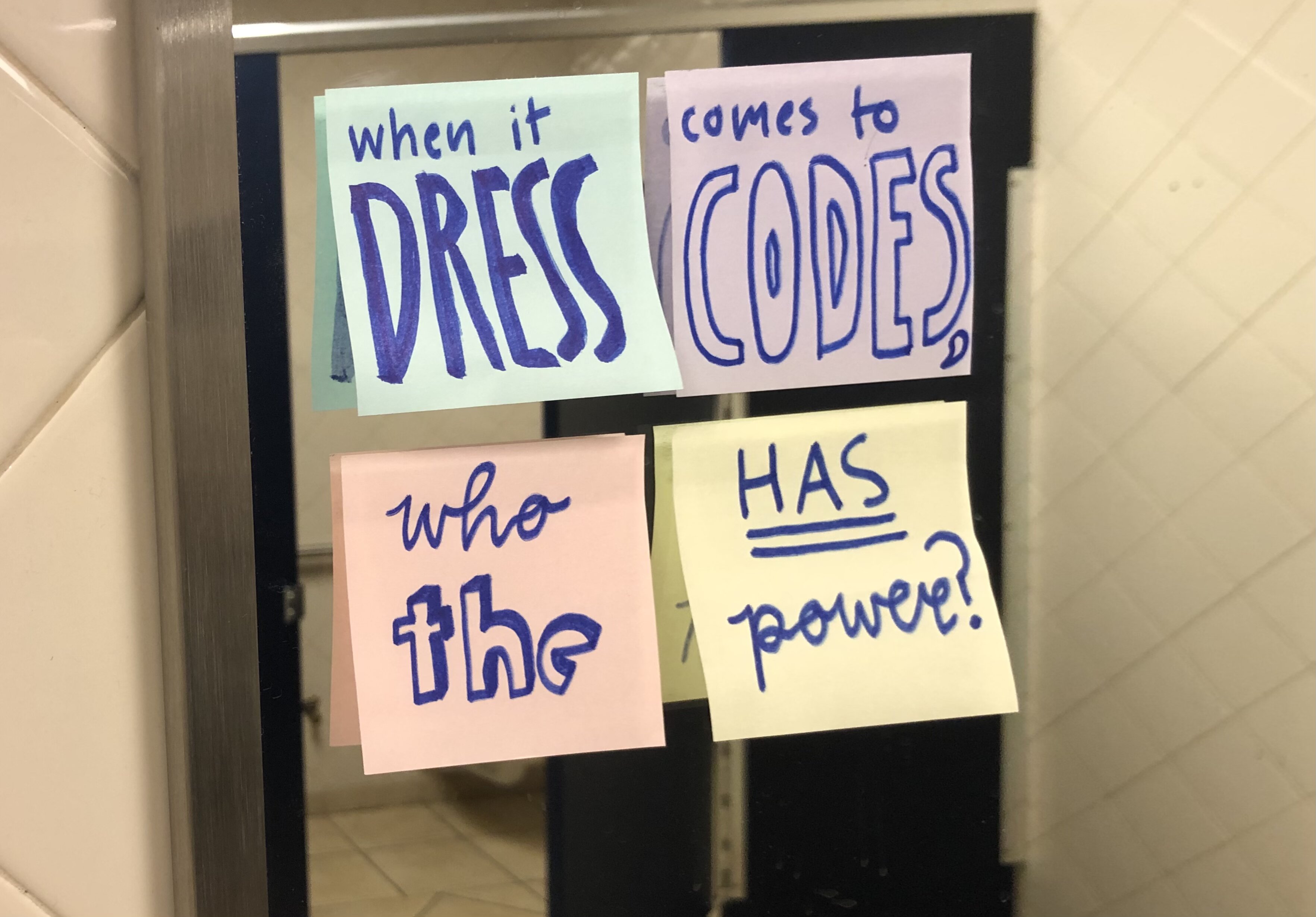When It Comes to Dress Codes, Who Has the Power?

When It Comes to Dress Codes, Who Has the Power?
By L. Franks
Oxford, OH — With the hot and humid weather Midwesterners are used to seeing every August and September comes crop tops, shorts, and tank tops. With crop tops, shorts and tank tops comes talk of people getting “dress-coded” and the inevitable discourse over whether or not the dress codes are fair.
On Sept. 7, 2021, the first day back from Labor Day weekend, there was plenty to talk about regarding the dress code. This was for two reasons: the first being that a dress code protest planned on social media for that day had been seemingly cancelled, and the second being that the girls’ bathrooms had been filled with signs and post-it notes criticizing said dress code.
Talawanda students, those using the girls’ bathrooms especially, were certainly angry, whether they thought the dress code was sexualizing teenage girls or whether they thought the people criticizing it were overreacting. This raised the question, who should the protest be directed towards? Was it Mr. York, as many of the bathroom messages suggested? Were the girls who’d planned on protesting “the reason we need dress codes” as others claimed? Or did the decision making power rest somewhere else?
According to Superintendent Edward Theroux, power over the dress code lies with the school board. However, the superintendent also plays a significant role. “I review and possibly ask for clarifications, changes, keep as is, etc. Once it is finalized, I recommend it to the Board for approval annually. Board makes the final decision,” Theroux said.
While the same process is used for all 5 buildings’ dress codes, the factors that decide which rules are necessary vary between buildings. “Some of it has to do with unique situations like daily schedules, starting times, etc. Some of it has to do with developmental needs which are different from PreK to Grade 12,” Theroux said. Additionally, the opinions of students in the upper grade levels are considered.
However, the current version of the dress code has been in place for nearly ten years. When asked about how the dress code had changed over the years, Principal Tom York said the dress code had changed over the years, but he was unsure about exactly what or when changes had been made. “The code we have today was with us when we moved into this building in 2012,” York said. “We have loosened the dress code since we have been here in areas, specifically in the length of clothing worn.” He went on to explain the reasons for these changes: “We didn’t want to get into measuring clothes because people come in different shapes and sizes, and the same thing will fit people differently”. Overall, he said, the dress code had remained mostly the same.
Superintendent Theroux and Principal York did not say what factors went into deciding which rules needed to exist (for example: what is the reasoning behind rules about the length of skirts, shorts, and dresses)?
Comparing Talawanda’s dress code side by side with those of other nearby school districts, it’s easy to see that these rules are widely agreed upon. For example, all five schools had a rule against hats, hoodies, and other head coverings, tank tops, short skirts, shorts, dresses, tank tops, crop tops, and anything advertising or promoting drugs, alcohol, and other adult content. Rules regarding ripped jeans, exposed undergarments, and footwear were also common (See chart below for more information).
Mt. Healthy’s dress code stood out because their district requires uniforms. However, it was observable from the components of the uniform that it focused on the same basic ideas. Before listing the rules, Mt. Healthy explains the reasoning behind the uniforms: “The Mt. Healthy City Schools Board of Education believes that a neat and orderly appearance is a positive factor for school safety and success.”
When asked about the importance of having a dress code, Superintendent Theroux cited similar logic. “Almost all jobs require some sort of dress code. It is imperative that we prepare our students for a successful life beyond school,” he said.
Despite this, many students see holes in the dress code and question how necessary it really is. For example, a frequent complaint when it comes to dress codes is that common dress code rules apply disproportionately to women. Others point out the way dress codes often fail to acknowledge the vast spectrum of body types and how this can make the same clothes fit differently on everyone, making them more revealing on certain people.
According to Principal York, students were beginning to take the first steps towards their goals. “Last week we met with a student group about the dress code and we had a really good dialogue. We tasked the group to take the dress code and make suggestions and offer ideas about how it could be better and more reflect current styles of dress. We are looking forward to getting back together with them,” he said. Additionally, Superintendent Theroux offered a time frame for students hoping to see changes in the dress code, explaining that these changes need to be solidified by early spring in order for the School Board to review it.
Common Rules in Dress Codes at SWOC Schools PDF



